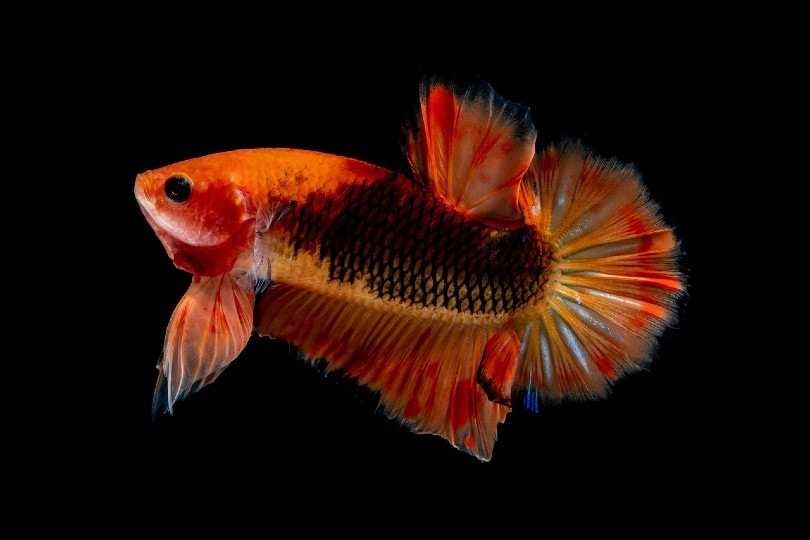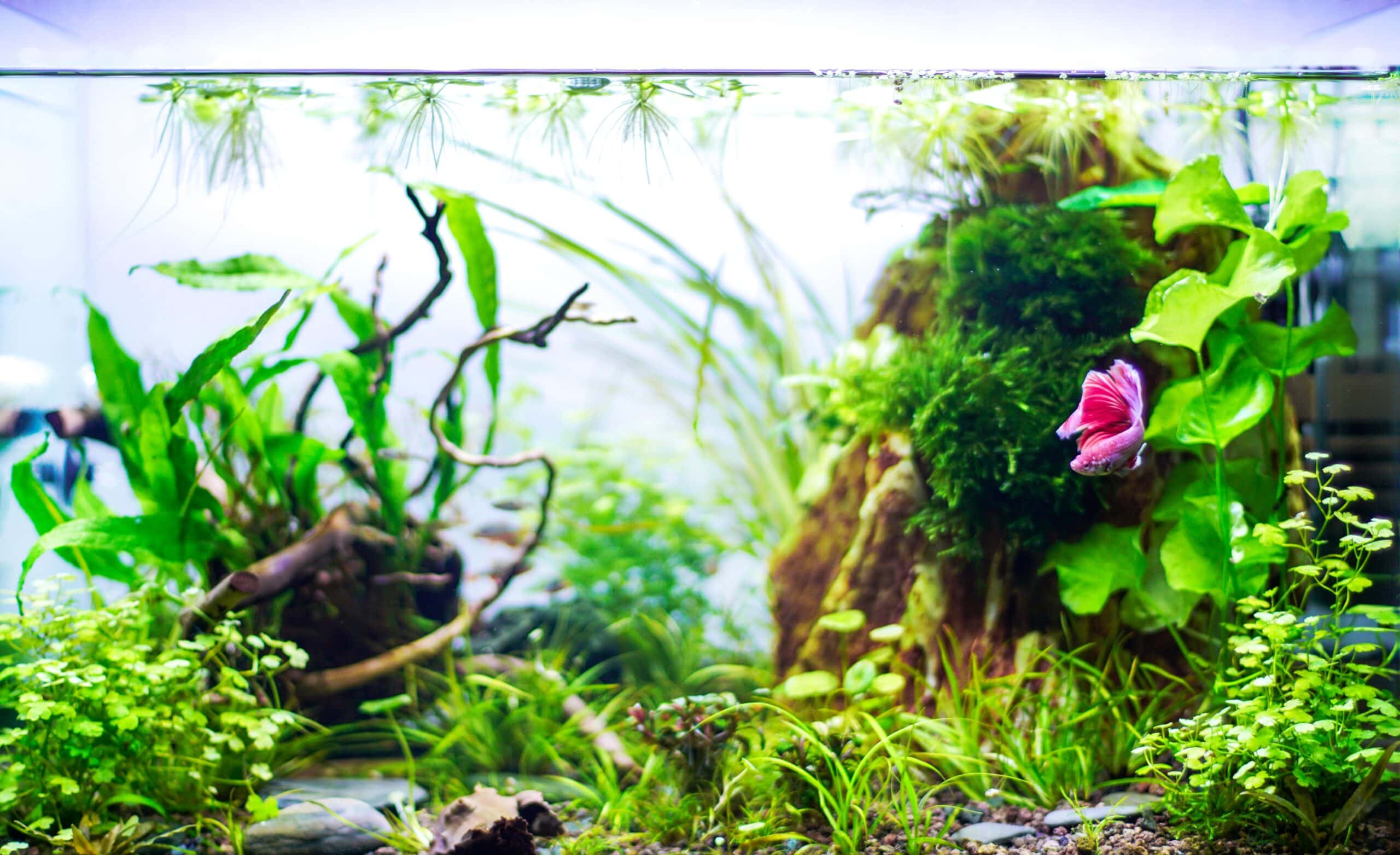Do Betta Fish Need a Heater? The Surprising Answer!

Updated on

When it comes to fish that are seemingly cheap and easy to care for, male bettas are often at the top of consumers’ lists. After all, how many other gorgeous, colorful tropical fish come home in a tub and can live in less than a gallon of water?
Sadly, many betta’s lives are cut short because pet owners don’t know that spending just a few dollars more on a larger tank set-up—with a filter and heating system—translates to several years of life for bettas. While this guide is intended to focus mainly on the subject of heaters, in line with our betta fish tank size guide, I personally recommend a minimum of a 2.5-gallon tank with filtration and heating as a starting point for adequate betta fish care.
Not only will bettas live longer and enjoy better health, but their true intelligence and capacity to interact with you will also reach unexpected heights.
But I digress! This article’s aim isn’t to discuss tank size, it’s to answer the all-important question: Do betta fish need a heater?
What Is The Optimal Water Temperature For Betta Fish?
Betta fish water temperature is best between 76 and 81 degrees Fahrenheit. They can still live in temperatures outside this range, as low as 72 degrees Fahrenheit, however, lower than this for any length of time – and dropping below 69 degrees for any time at all—stresses them greatly, weakens their immune system, and can even be fatal.
With too low a tank temperature and a weakened immune system, some illnesses they may develop include:
- A bacterial infection commonly known as ‘fur coat syndrome’ is often fatal.
- Dormant ich (white spot) infestations may suddenly appear
- Mouth fungus and fin rot
They can also live in water temperatures as high as 80 to 82 degrees Fahrenheit. Sometimes recommended in hospital tanks to speed up the action of medication, but not recommended long term as you are slowly cooking fish (in essence.)
So, try to keep your bettas water between 74 and 78 degrees at all times.
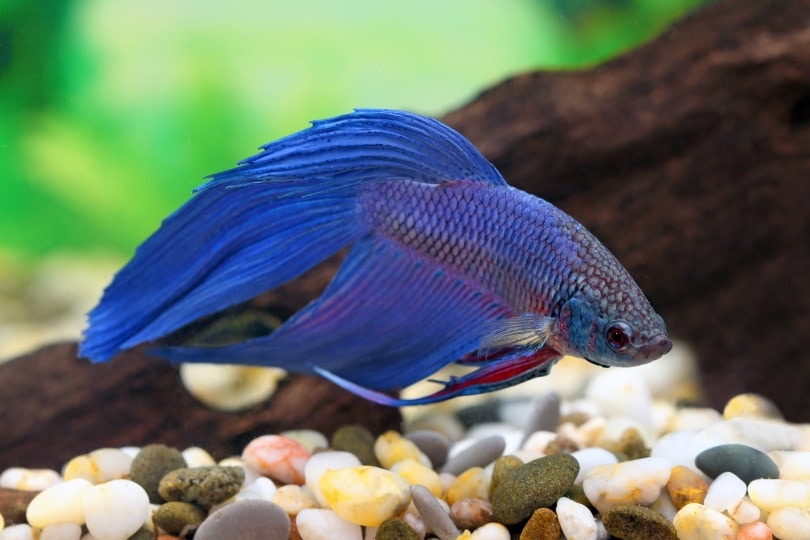
What Happens When Bettas Get Too Cold?
Bettas are tropical fish. This means they do not have a cold-water fish’s capacity to survive extreme cold. While betta can survive cooler temperatures for a short time, they don’t have internal regulating mechanisms to enable them to survive colder temps. Like all fish, their body temperature matches that of the water they live in.
If you think of tropical fish as being akin to cold-blooded reptiles, then you will have a better understanding of temperature regulation. You will also have a better understanding of why excess cold can spell death for bettas in a matter of minutes to hours.
Signs that your betta is too cold include:
- Slow, sluggish swimming
- Will sit closer to the heater or any area where there is a warmer water current
- Loss of color and dull appearance
- Increased illness and infections
A Constant Temperature is Best
Aside from keeping temperatures in the optimal range, bettas also do best when temps are kept constant.
A couple of degrees swing during the course of a day, or seasonally, is perfectly normal and will cause no harm. But typically, an eight-degree swing over the course of a day is actually worse than a constant temperature just slightly outside the optimal range. For the record, this is another reason we recommend larger tanks for betta than most people do. The larger the volume of water, the less and the slower the temperature will fluctuate over time.
I personally try to keep my betta tanks at a constant 78 degrees Fahrenheit with the help of a thermostatically controlled heater.
 Tank Size vs. Water Temperature Stability
Tank Size vs. Water Temperature Stability

Even though unheated water tends to stay at and change along with room temperature, it will vary by a few degrees depending on the volume of water in question. For example, if the room (air) temperature dips suddenly from 75 degrees down to 70, the water in your aquarium will not drop as quickly. In fact, it can take many hours.
That being said, larger temperature differences also result in longer amounts of time required to reach room temperature. So, aside from helping reduce problems associated with waste build-up, water temp stability is a prime advantage of larger aquariums. Sadly, when people expect bettas to survive in a tiny bowl, they fail to realize that the temperature inside the bowl will constantly fluctuate right along with that of the surrounding room.
While a degree or two of change may not bother you at all or the betta too much, they will be very sensitive to repeated changes of +/- 5 degrees. As I have indicated before, a minimum 3-gallon aquarium seems to work the best for bettas. They get the benefit of more stable temperatures and higher water quality.
Consider that in a one-gallon bowl, the water might adjust to room temperature in about 15 minutes, but will take about 45 minutes to an hour in a 3-gallon aquarium. This slower change is far kinder for a betta to deal with—if they have to!
So, Do Betta Fish Need a Heater?
Quite simply, yes! Bettas need a heater. As described above, they can only thrive in warm water that’s held at a stable temperature. A heater in their tank is the only way you can provide this.
So with this in mind, how do you go about choosing an appropriate heater? We’ll go through some buying tips, what features to look for, what to avoid, and safety recommendations for use below.
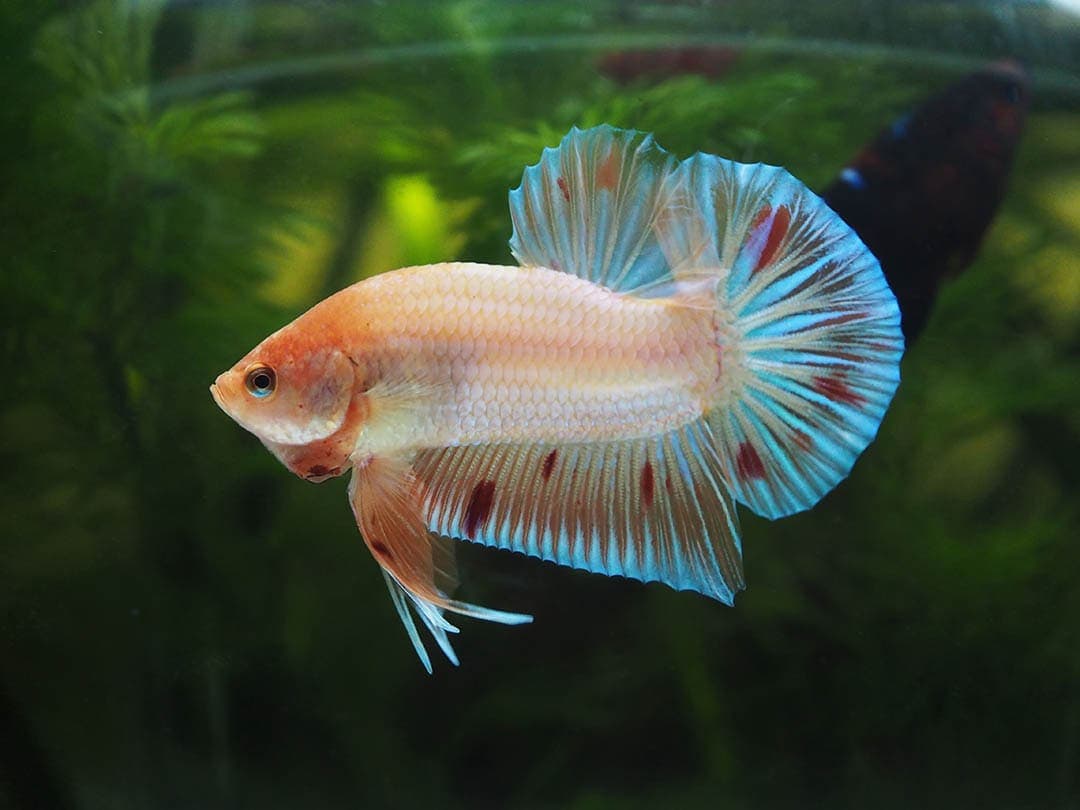
Pointers for Choosing the Best Heater for Bettas
With the sheer number of different aquarium heater varieties available, along with too often given ‘bad advice’, choosing the best type for betta tanks isn’t always easy. The following will point you in the right direction.
If I’m to give you my most important tip when it comes to buying a heater, it’s this:
Choose a Heater With a Thermostat!
It’s very easy to overheat your tank water with a heater that doesn’t have a thermostat. Particularly if, as many people do, you have a small tank. A thermostat will turn the heater off once a pre-defined temperature is reached. This eliminates the risk of essentially cooking your betta if the room temp is high and a heater is permanently on.
Luckily, the vast majority of models today have a thermostat, but the ones without do exist so it’s worth checking before you buy.
Opt for a Fully Submersible Heater
Fully submersible heaters are more efficient and do a better job. It’s as simple as that. Also, if a heater isn’t made to be fully submersible and you do accidentally drop it fully into the tank, it can lead to problems.
Choose Glass Over Plastic
I prefer glass tubes over plastics and other materials. The heat transfer is more efficient and to me, they just look so much better and are very easy to keep clean and looking good whereas plastic stains and discolors very quickly.
Other Important Heater Considerations
When choosing a heater for your betta tank:
- Allow 3–5 watts per gallon of water
- It should fit comfortably in the tank without touching the gravel, filter, or decorations
- You should be able to place it in one corner and get good heat circulation along with water current from the filter
- If you aren’t using a fully submersible heater, make sure there is an upper screw to attach it to the tank and not just suction cups. Bettas can and will swim in between the heater and suction cups and cause them to dislodge. At that point, the entire unit will become submerged in the water. Even though most models are supposed to have a shutoff switch for these situations—I think it’s best not to find out if it works!
Safe Heater Operation
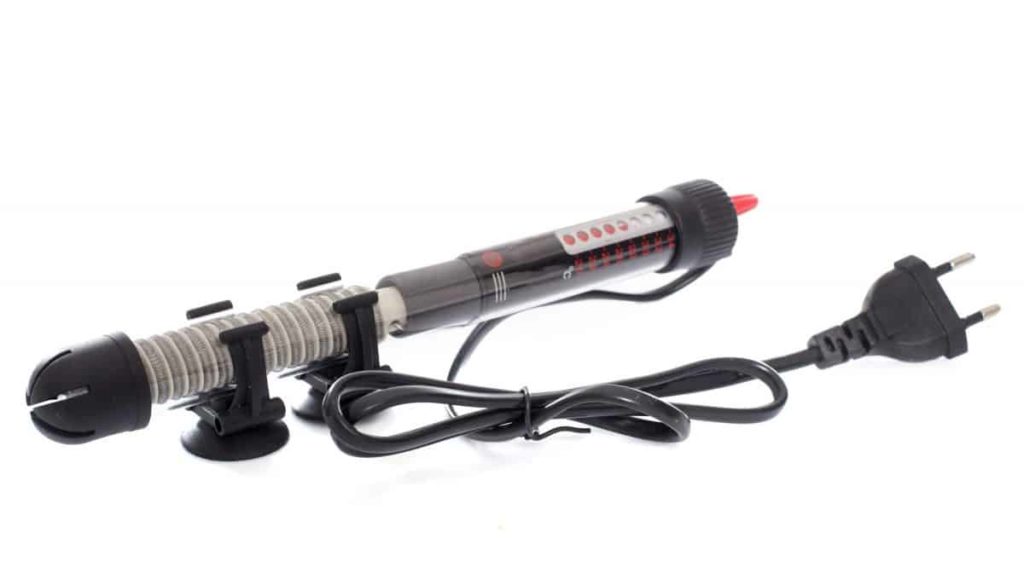
There are just a few main rules for making sure aquarium heaters remain safe for you and the fish in the aquarium:
- Install a thermometer, maybe a couple in very large tanks so that you know the temperature ranges throughout the tank.
- Monitor temperatures every few hours, the last thing before bed and first thing in the morning. Heaters do go faulty and you want to catch it ASAP.
- let the heater sit set up for an hour in the water before plugging it in (and the same before taking it out after turning it off.) This allows the glass to reach equilibrium with the water temperature and prevents possible cracking.
- Be aware of how the thermostat on your heater works. Some let you set a temperature, others have a setting for simply “more” or “less”. If the latter, do not adjust the setting more than a ¼ turn at any given time. If an adjustment made is too high and you forget to monitor it until stable, the heater may bump the temperature up to killer levels before shutting off. (So I guess I should say: With this filter type, always monitor until the temp is stable.)
- If using a semi-submersible heater, always observe the waterline marking in relation to the water level in the aquarium. Make sure that water doesn’t go above or below this marker. Allowing the water to go too high can lead to electric shock while allowing it to go too low can cause the heating tube to overheat and explode.
 Emergency Heat Options for Heater Failure or a Power Cut
Emergency Heat Options for Heater Failure or a Power Cut
When you have a power outage, aside from the loss of steady filtration, the heater in the tank will also stop working, the water will start cooling and your bettas will become extremely uncomfortable.
Here are some emergency ways to keep the temperature in the safe zone. While these methods may not keep things 100% stable, they can still keep your fish alive and reduce the chances of illness while you get proper heating restored.

Method 1: Float Hot Water in Bottles.
To use the method, take out about 1 gallon of water (you can put it back in later). Take hot water from a faucet or some other source and float it in sealed bottles in the aquarium. You should not use boiling water, but it should be hot enough to keep the tank at a comfortable level.
Use thermometers to track the temperature and determine when to change the bottles out. Once you have heat restored, simply re-add the old tank water or put new water in as needed.
Method 2: Candle Heating.
You can place a candle near the aquarium as long as it doesn’t release large quantities of soot or odor. I have found that freestanding tapers and votives release more heat than glass-encased candles. Building or buying a dedicated candle heater can also be used to keep the aquarium (and the rest of the room) a bit warmer.
Since these heaters—made from clay pots—use tea lights as a heat source, they are economical and easy to keep on hand for emergencies. As long as you keep them dried out, they will heat the room quickly and help maintain a stable temperature for the tank.
Conclusion
A single male betta living in a reasonably sized and well-maintained tank can live over 5 years, not the 1 to 2 years that more neglectful owners experience betta live for. And an important part of such a well-maintained tank is having a good quality heater.
This will reduce temperature fluctuations that cause illness, sluggish behavior, and other problems while keeping your betta’s environment optimal for a long and happy life.
So do betta fish need a heater? Yes! Make sure their tank has one because a stable, warm temperature is essential for their health and well-being.
Happy fishkeeping!
See Also:
Featured Image Credit: panpilai paipa, Shutterstock

 Tank Size vs. Water Temperature Stability
Tank Size vs. Water Temperature Stability